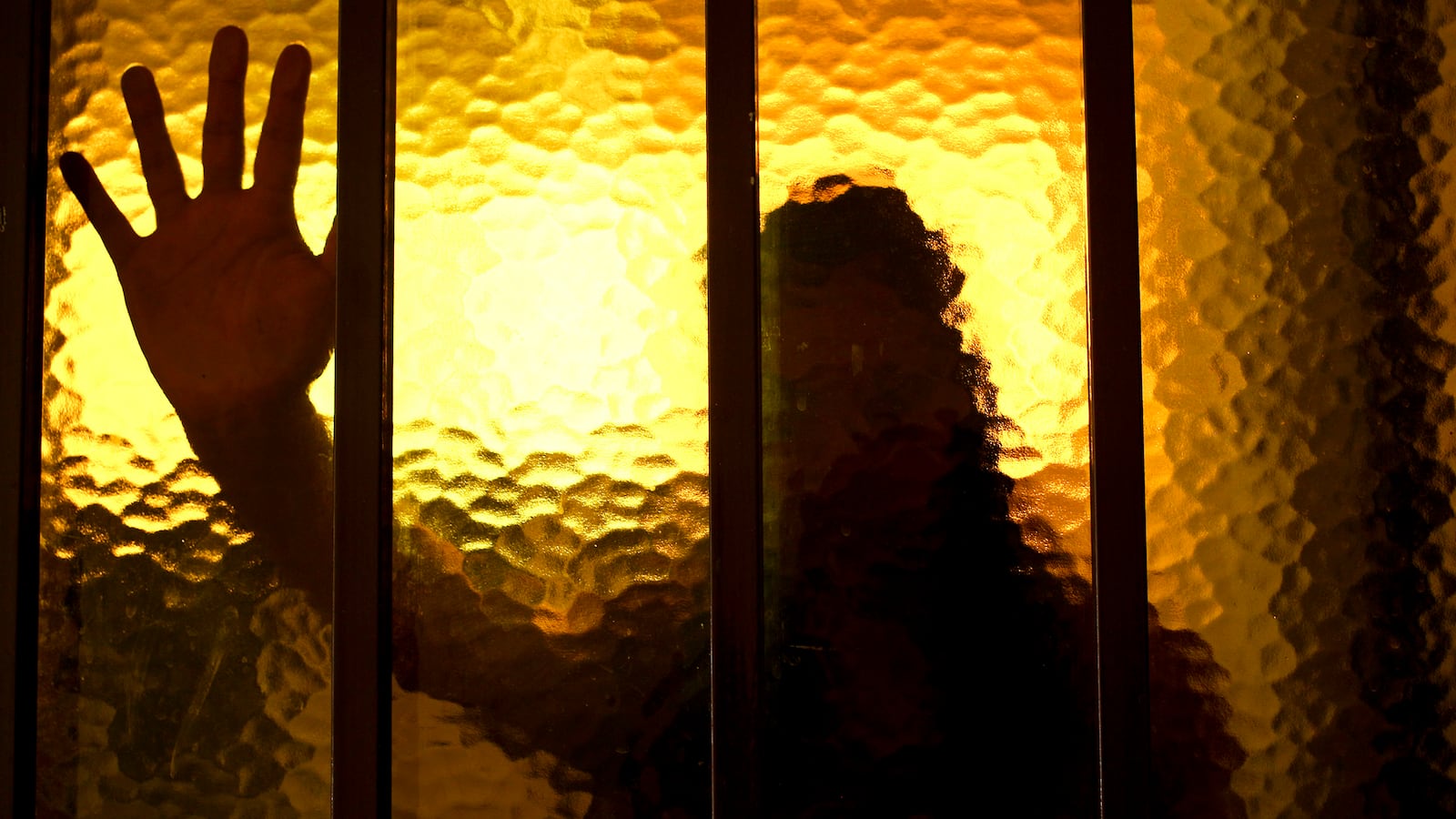ROME—“Giuseppe” was born to impoverished parents outside of Verona in northern Italy with a congenital birth defect that left him deaf and mute. When it became clear that his parents could not provide for him—much less communicate with him—they brought him to the local Catholic church, which enrolled him in their Antonio Provolo Institute for deaf and mute children. It was here he learned to communicate through standard sign language and other visual cues. It was also where he became one of scores of victims of the priests and religious brothers who ran the school.
When he was 11, a monk who worked at the institute as an educator started teaching “special secret signs” for things like masturbation, fellatio, penis, and anus. “I didn’t understand at first just why this man was teaching me these strange secret signs,” Giuseppe explained in an exclusive, and very emotional, interview in Rome. “Then one day it became very clear when one of the priests made the secret sign for fellatio when we were alone, which was followed by him pushing his erect penis into my mouth.”
From that point on, Giuseppe said through his interpreter—often using fast and somewhat violent sign language as tears ran down his face—priests and the brothers would give a sign to the young boys and then take them to special rooms Giuseppe says were used for “time out” punishments or as resting areas. He said that because everyone was deaf at the school except those who worked there, no one could hear the screams and cries of the young boys when the abuse took place. Giuseppe said that on several occasions he and others tried to write down what was happening, but because their letters and notes were given to the priests and brothers to be mailed out, they were likely intercepted.
“Of course we screamed and cried,” he said. “Sometimes you would see priests coming into the dormitory at night, or you would see friends with tears rolling down their faces and you knew exactly what had just happened. You didn’t need to hear to know.”
The abuse against Giuseppe allegedly lasted for seven full years, until he turned 18 and left the institution. Whenever he tried to explain what was happening to him inside the school, no one understood because the language he had been taught to describe the sexual acts was incomprehensible to sign-language readers. “It was so frustrating that no one understood what we said,” Giuseppe explained, adding that even after he left the institution and lived in another Catholic charity house, he had a difficult time making anyone understand what had happened. “It took a long time for us to be believed.”
Giuseppe is one of 67 young boys who have been named in court documents and were allegedly abused by more than two dozen priests and brothers at the Provolo Institute, according to Verona prosecutors who have been investigating the allegations for nearly a decade and who plan to bring it to trial later this year.
One of the most notorious alleged offenders was Father Nicola Corradi, now 83, who was moved to South America in the mid-1980s after Giuseppe and others’ abuse claims came to light. Rather than handing him over to secular authorities or asking the mother church in Rome to defrock him, the bishop transferred him to the Provolo Institute in Mendoza, Argentina. Several other priests accused of abuse in Verona were also transferred to the sister school in Argentina, but have since passed away.

Children walk past the Antonio Provolo Institute in La Plata, Argentina, Thursday, Sept. 6, 2018.
Santiago Hafford/APIn Argentina, court documents there would later allege that Corradi was soon up to his usual practices and, despite credible reports from Italy that were beginning to surface, he was allowed to stay in his job at the school for the deaf, where he apparently found like-minded abusers. He was finally arrested in 2016 on allegations that he abused 22 deaf and mute children over the course of nearly three decades. Three other priests were arrested with him. There are more than 60 civil trials going on across Argentina against priests like Corradi who allegedly abused children.
Julieta Añazco was one of those victims at the Provolo Institute. She says she was first abused by Father Ricardo Giménez, who worked at the institute. He first attacked her when she was just seven years old, she says, when the two were in a tent being used as a confessional at a Catholic youth festival. The abuse went on for three years before her parents found out and filed a complaint. Giménez was then transferred by the Archdiocese of Buenos Aires, under the direction of then-Cardinal Jorge Mario Bergoglio, now Pope Francis.
Añazco is now a pivotal member of Argentina’s branch of the Survivor’s Network of Those Abused by Priests, known as SNAP. She told the German magazine Der Spiegel in a cover story out last week that she and another group of students from the Provolo Institute tried to meet on several occasions with Bergoglio before he was elected as pope because he was the highest ranking prelate in the diocese at the time. Then, in July 2013, she and 13 other victims wrote a letter to the new pontiff to remind him about what happened in his native country under his watch. Giménez, who professes his innocence, is still an active priest although he was arrested and briefly detained.
That letter was never answered by Francis, but Añazco did receive proof of receipt. She is lobbying a court in Argentina to open a civil suit against the pope for overlooking complaints when he was the head of the archdiocese. The watchdog website Bishop Accountability outlines five cases that Pope Francis overlooked as cardinal. One concerns Father Julio Cesar Grassi.
Earlier this month, the Associated Press uncovered a secret 2,000-page forensic study commissioned by Bergoglio in 2010 to study whether Grassi, a priest who worked at the Provolo Institute and founded a home for street children he is alleged to have abused, and who already had been convicted in secular courts and sentenced to 15 years in prison, was truly guilty. The report concluded that he was not and that the case did not merit a criminal trial. An appellate court upheld the conviction against the priest, but he has not been defrocked.
The Vatican has not commented on the Italian or Argentinian cases of clerical sex abuse in the Provolo institutions or why Francis, before he was pope, didn’t act. When the Italian case goes to court later this year it will be one of the biggest sex-abuse cases in Italy to date. This month a Milanese priest was sentenced to six years and four months in prison for abusing a minor in a parish there, but Italy has largely sidestepped the sorts of abuse scandals now rampant in other countries.
Last Tuesday, the German Bishops Conference issued its own internal assessment called the “Study On Sexual Abuse of Minors by Clergy,” which outlines abuse at the hands of 1,670 priests against 3,677 victims who were mostly young boys.
On his flight back from the Baltics last week, the pope refused to answer questions about clerical sex abuse in any country and instead kept the press conference focused on his apostolic voyage. Such blatant silence further calls into question whether Francis truly understands the importance of transparency on this matter.
Giuseppe, signing to his interpreter, said he believes that there are countless other silent victims like himself around the world, and that as long as the church continues to ignore their letters and cries for help, healing can never begin. “They offer prayers and apologies and even money,” he says. “But they can’t give us back our innocence. They can’t undo these terrible things.”






